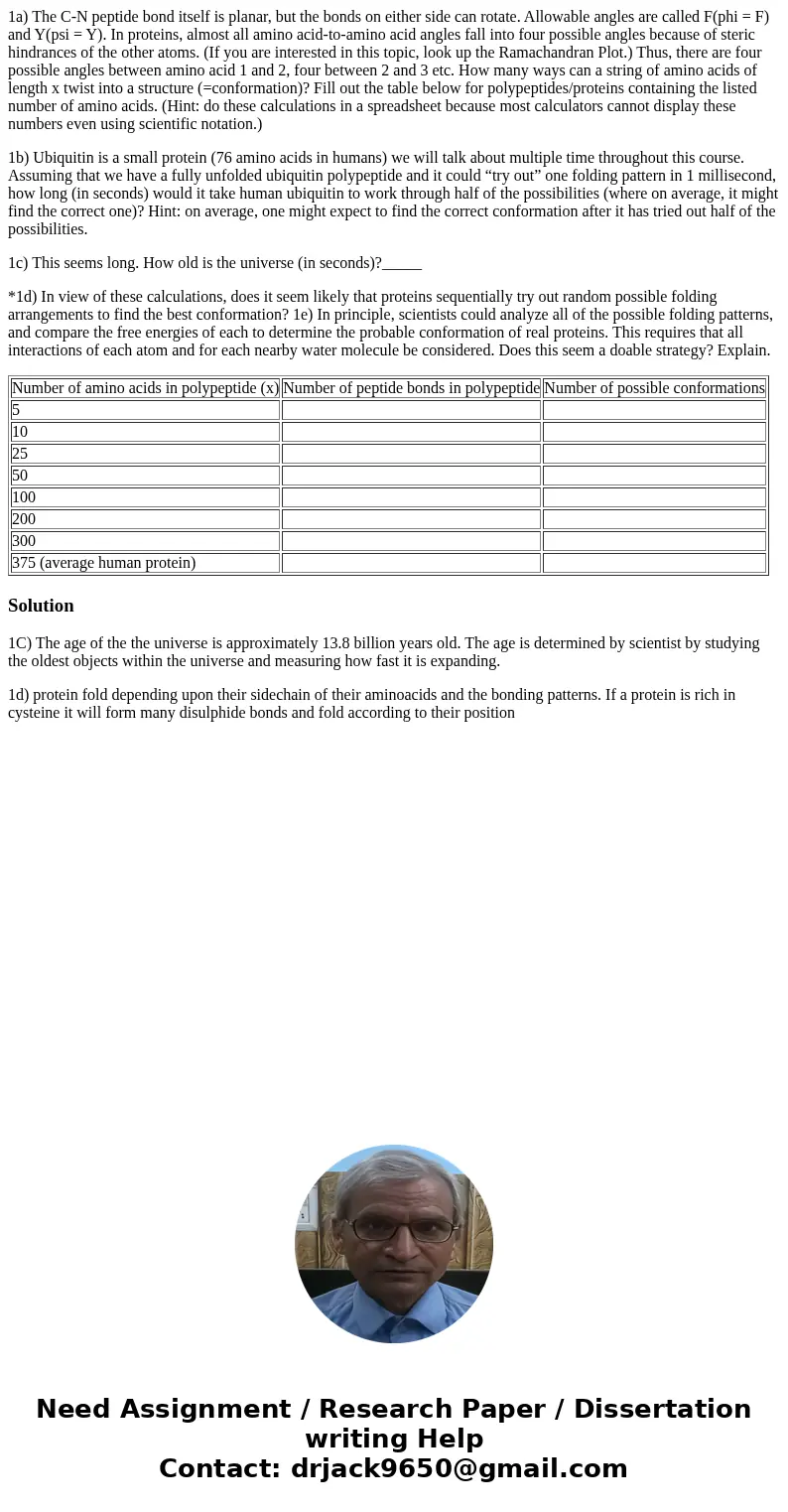1a The CN peptide bond itself is planar but the bonds on eit
1a) The C-N peptide bond itself is planar, but the bonds on either side can rotate. Allowable angles are called F(phi = F) and Y(psi = Y). In proteins, almost all amino acid-to-amino acid angles fall into four possible angles because of steric hindrances of the other atoms. (If you are interested in this topic, look up the Ramachandran Plot.) Thus, there are four possible angles between amino acid 1 and 2, four between 2 and 3 etc. How many ways can a string of amino acids of length x twist into a structure (=conformation)? Fill out the table below for polypeptides/proteins containing the listed number of amino acids. (Hint: do these calculations in a spreadsheet because most calculators cannot display these numbers even using scientific notation.)
1b) Ubiquitin is a small protein (76 amino acids in humans) we will talk about multiple time throughout this course. Assuming that we have a fully unfolded ubiquitin polypeptide and it could “try out” one folding pattern in 1 millisecond, how long (in seconds) would it take human ubiquitin to work through half of the possibilities (where on average, it might find the correct one)? Hint: on average, one might expect to find the correct conformation after it has tried out half of the possibilities.
1c) This seems long. How old is the universe (in seconds)?_____
*1d) In view of these calculations, does it seem likely that proteins sequentially try out random possible folding arrangements to find the best conformation? 1e) In principle, scientists could analyze all of the possible folding patterns, and compare the free energies of each to determine the probable conformation of real proteins. This requires that all interactions of each atom and for each nearby water molecule be considered. Does this seem a doable strategy? Explain.
| Number of amino acids in polypeptide (x) | Number of peptide bonds in polypeptide | Number of possible conformations |
| 5 | ||
| 10 | ||
| 25 | ||
| 50 | ||
| 100 | ||
| 200 | ||
| 300 | ||
| 375 (average human protein) |
Solution
1C) The age of the the universe is approximately 13.8 billion years old. The age is determined by scientist by studying the oldest objects within the universe and measuring how fast it is expanding.
1d) protein fold depending upon their sidechain of their aminoacids and the bonding patterns. If a protein is rich in cysteine it will form many disulphide bonds and fold according to their position

 Homework Sourse
Homework Sourse